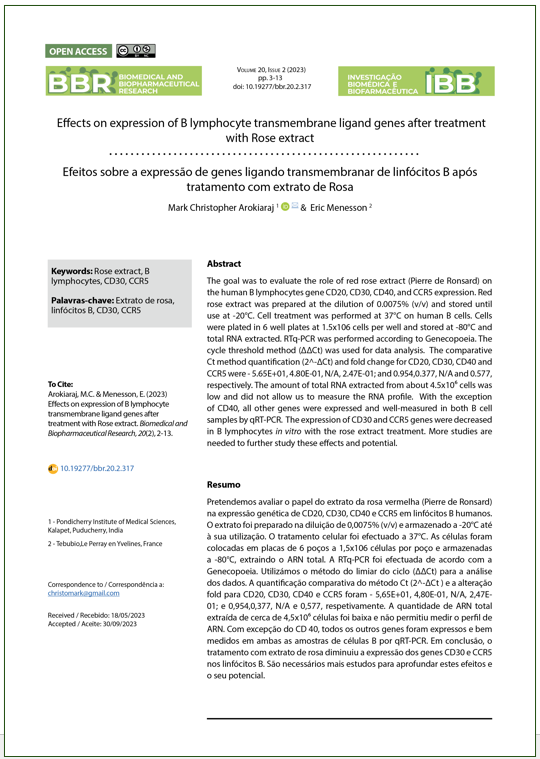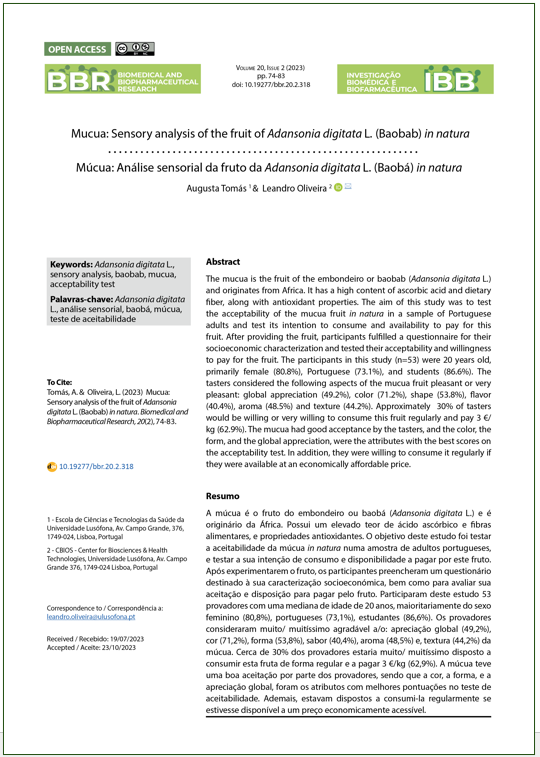Selected Recent Publications
 |
Effects on expression of B lymphocyte transmembrane ligand genes after treatment with Rose extract Mark Christopher Arokiaraj 1 1 - Pondicherry Institute of Medical Sciences, Kalapet, Puducherry, India 2 - Tebubio,Le Perray en Yvelines, France corresponding author: DOI: 10.19277/bbr.20.2.317 |
|
Abstract: The goal was to evaluate the role of red rose extract (Pierre de Ronsard) on the human B lymphocytes gene CD20, CD30, CD40, and CCR5 expression. Red rose extract was prepared at the dilution of 0.0075% (v/v) and stored until use at -20°C. Cell treatment was performed at 37°C on human B cells. Cells were plated in 6 well plates at 1.5x106 cells per well and stored at -80°C and total RNA extracted. RTq-PCR was performed according to Genecopoeia. The cycle threshold method (ΔΔCt) was used for data analysis. The comparative Ct method quantification (2^-ΔCt ) and fold change for CD20, CD30, CD40 and CCR5 were - 5.65E+01, 4.80E-01, N/A, 2.47E-01; and 0.954,0.377, N/A and 0.577, respectively. The amount of total RNA extracted from about 4.5x10⁶ cells was low and did not allow us to measure the RNA profile. With the exception of CD40, all other genes were expressed and well-measured in both B cell samples by qRT-PCR. The expression of CD30 and CCR5 genes were decreased in B lymphocytes in vitro with the rose extract treatment. More studies are needed to further study these effects and potential. |
|


